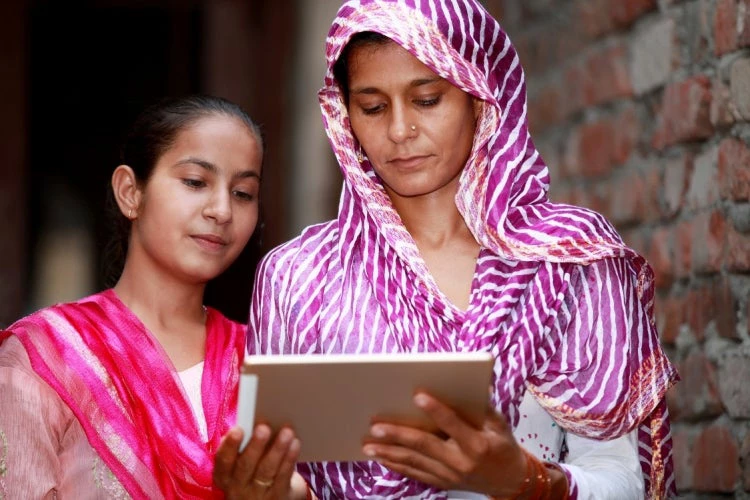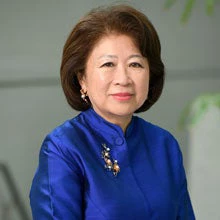A global pandemic was far from Loretta Ibrahim’s mind when she signed up for the Click-On Kaduna digital skills program two years ago. The program has trained nearly 1,200 youth affected by conflict in the Nigerian state of Kaduna to prepare them for opportunities in the digital space.
When COVID-19 drove many companies to shift to digital technologies this year, Loretta, 23, was ready. “The Click-On Kaduna experience has been nothing short of spectacular,” she said. “Because I had the skills already, I just got hired to manage the social media image of two clients.”
Initiatives like Click-On Kaduna, launched by the World Bank, the Rockefeller Foundation, and Kaduna’s state government, are key to bridging the digital gap between women and men.
Yet, as the world becomes more and more digitally connected, women continue to lag behind men in their use of digital technologies, particularly mobile technologies. That means they are less likely than men to have access to vital services such as cash transfers, medical information, educational content, or employment opportunities.
Even before the pandemic, women in low- and middle-income countries were 8 percent less likely than men to own a mobile phone. And 300 million fewer women than men use mobile internet , representing a gender gap of 20 percent. This digital gender divide is now expected to worsen because of COVID-19.
The pandemic is underscoring that access to digital technologies is critical in times of crisis. For example, in India, where the gender gap in smartphone ownership is around 60 percent, researchers have found that the majority of poor women are likely to be excluded from the COVID-19 relief digital cash transfer program set up by the government. That’s because they either lack access to digital banking accounts or aren’t aware of them.
To address these gaps, governments and the private sector need to put a gender lens at the center of their pandemic response. There are promising early examples. Togo, which just appointed its first female prime minister, recently launched Novissi (which translates to “solidarity”), a digital cash transfer program to help informal workers during the pandemic. Women and men receive an equivalent of $20 and $17 per month, respectively, to meet basic needs such as food, water, power, and communication services. The program allocates more money to women, because they are more likely to be informal workers and to be responsible for their family’s basic needs such as food and nutrition.
In Myanmar, meanwhile, Wave Money, a mobile financial service, has partnered with the European Union and UN Office for Project Services to distribute the equivalent of 5 million euros to garment workers impacted by the pandemic.
The recently launched World Bank program, Bridging the Gender Divide through Inclusive Digital Development, is another good example, which aims to leverage the EQUALS global partnership for digital gender equality. EQUALS was co-founded in 2016 by ITU, GSMA, ITC, UN University, and UN Women, and is bringing together the public and private sectors to bridge the digital gender divide. The Bank’s new program will launch and evaluate three digital literacy pilot activities for women and girls in Africa.
These initiatives are a step in the right direction—yet more can be done by the public and private sectors to bridge the growing digital gender divide as countries address COVID-19. If the mobile gender gap is not addressed directly, women will be left behind as societies and economies further digitalize.
To tackle the gap requires, first, improving the quality and availability of sex-disaggregated data related to mobile access and use—to better inform strategies, set targets, and track progress.
Second, we need to address the barriers that women face on access, affordability, knowledge and skills, safety and security, as well as make relevant content, products, and services more available to them:
- Access: Women in poor and remote areas may find that mobile services and the internet are out of reach, as they’re often available only outside the home or in places that are unsafe or inaccessible. Women also face difficulties obtaining the identity documents required to open accounts. In Somaliland, Telesom introduced a simplified KYC (know-your-customer) account to enable women without an ID to register for their mobile money service. The KYC account doesn’t require formal identification: only a name, photo, date of birth, and contact details. Telesom also recruited more female agents to encourage mobile money registration among women.
- Affordability: Connectivity and device costs can reduce women’s ability to benefit from mobile services , as they often have less financial independence, lower incomes, and less access to external sources of finance than their male peers. In many countries, women are also more likely to have lower-quality handsets and to obtain them later than men. In Kenya, where women are 39 percent less likely to have access to mobile internet, Safaricom partnered with Google to deliver the country’s most affordable smartphone. Each device comes loaded with free 500MB data during the first month.
- Knowledge and skills: In many countries, a higher proportion of women are illiterate than men or have less education; they also often lack digital skills or the confidence to use mobile services and the internet. Hence, they face hurdles in accessing digital services. In 15 countries of Sub-Saharan Africa and Asia, Viamo provides a free, on-demand information service, by calling 321, in partnership with mobile network operators. This provides women with interactive, educational content, and training in digital skills.
- Safety and security: While mobile phones and the internet can become conduits for threats that have always existed (such as bullying) as well as new ones (such as online identity theft), these services can also make women feel safer. As part of a World Bank project in Peru, a domestic violence helpline for women, similar to phoning 911 in the United States, is being developed. It will help women use digital technologies to report instances of abuse, both during the pandemic and after the crisis.
- Relevant content and social norms: Closing the gender gap requires making relevant content, products, and services available, as well as supporting the development of an ecosystem of apps and services to meet the needs, preferences, and capabilities of women and girls. In Nigeria, Equal Access International partnered with a popular local radio station to produce a show that tackles gender stereotypes, challenges cultural taboos, and promotes the use of digital technologies among women and girls.
Government policies can support these efforts to address the unique challenges women face. Accelerating regulatory reforms—including by reducing sector-specific taxes and custom duties—can mobile services more affordable for the end user, particularly women, who represent the majority of the unconnected. In markets where Universal Service Funds exist, their potential to make mobile phone and mobile internet services more affordable for women should be reviewed, in consultation with industry. Where appropriate, this could include projects focusing on women’s adoption of these services.
The mobile and digital gender gap is not going to close on its own. We need to collaborate and take coordinated action. The root causes of the mobile gender gap are complex, diverse, and interrelated and cannot be addressed by one organization alone.
During last week’s 2020 World Bank Group Annual Meetings, ministers and private sector leaders committed to elevate this agenda even further. Now is the time to join forces to ensure that women aren’t left behind in a rapidly shifting world, where connecting digitally has become the new normal.




Join the Conversation